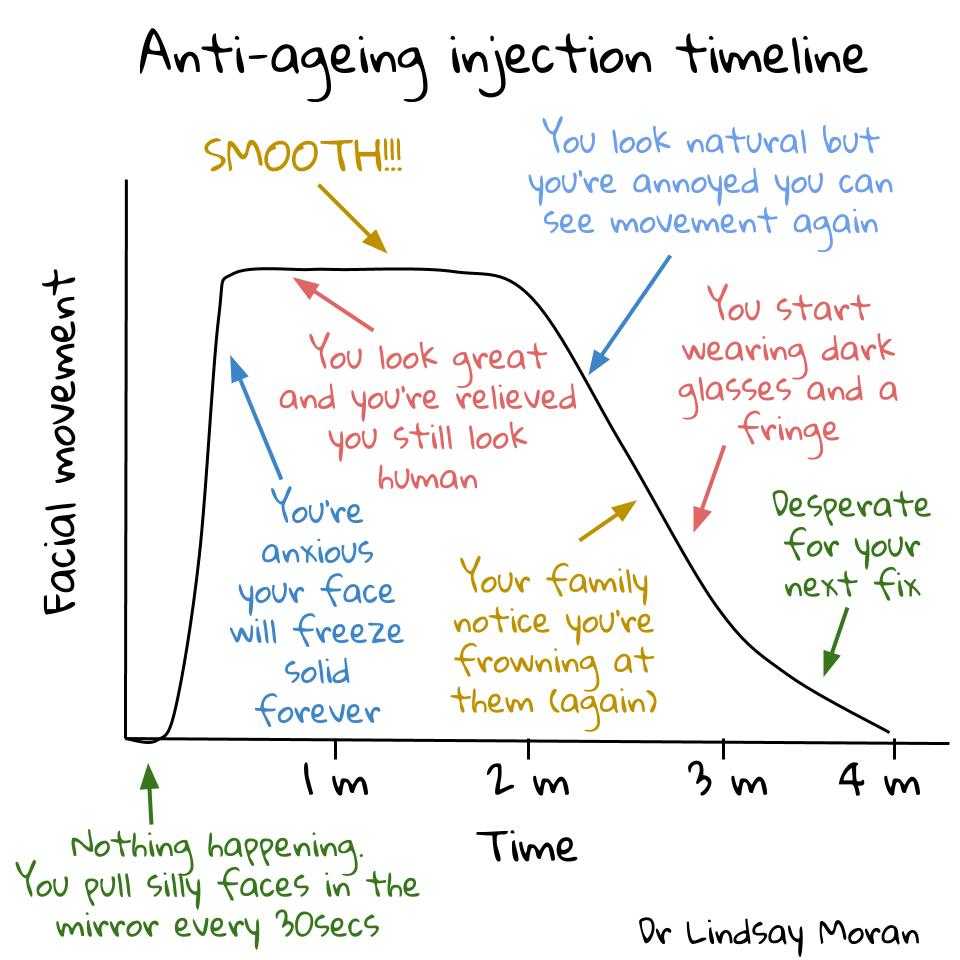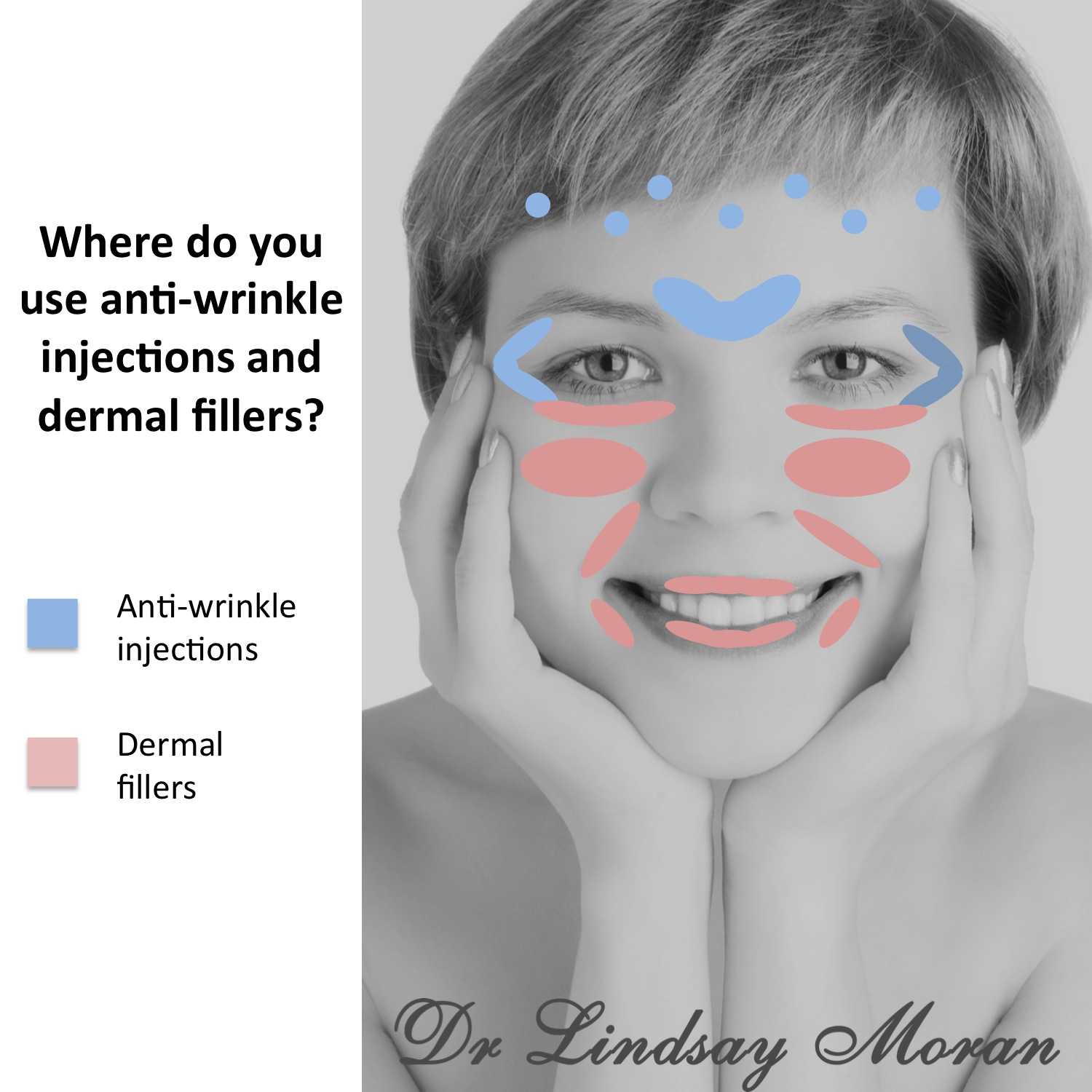Below I have detailed the aftercare information so that you can be aware of potential side effects, and to ensure you get the best possible outcomes by speeding up the healing process and reduce the risk of complications.
Early Side Effects
It’s normal to experience some side effects after a dermal filler treatment, most of which should subside within a few days to a week.
Here are some early side effects you may notice:
- Redness: The injection site may appear red immediately following the treatment.
- Swelling or Bruising: These are common side effects that typically subside within a few days to a week.
- Pain or Tenderness: You may feel some discomfort at the injection site.
- Itching: Some people may experience itching at the injection site.
- Bleeding: There may be minor bleeding from the injection site right after the procedure.
- Lumps or Bumps: Some people may feel slight lumps or bumps under their skin. These are often temporary and will usually settle or can be managed by your practitioner.
Most side effects from dermal fillers are mild and minor and should resolve on their own. If they persist, or if they are getting worse, please get in contact.
Serious Side Effects
Although rare, there are some serious filler complications that can happen when the filler enters or blocks off an artery. Please get in contact immediately if you suspect the following as the filler dissolving agent will need to be administered.
- Vision changes or Blindness is extremely rare but can occur if filler is inadvertently injected into the blood vessels that supply the eyes. If you notice visual changes, get in touch immediately.
- Skin Necrosis is a very rare but serious complication that can occur if the filler is injected into a blood vessel, obstructing the blood supply and leading to the death of skin cells. Symptoms include severe pain, a dusky, pale or mottled skin appearance and a cool feel to the skin with delayed blood supply.
Please contact immediately if you suspect the above.
Delayed Side Effects
While most side effects of dermal fillers are immediate and typically resolve within a few days to a week, there are some potential delayed side effects that can occur weeks, months, or even years after the procedure. It’s important to note that these are less common, but it’s good to be aware of them:
- Although rare, infections can occur even weeks after the procedure. Signs of an infection include increased pain, redness, swelling, pus, or fever.
- Granulomas are firm, often noticeable nodules that can form around the filler material. They might be mistaken for prolonged swelling but they persist and often require treatment.
- Delayed Hypersensitivity Reactions include redness, swelling, itching, or the formation of small bumps. These reactions can occur even a few weeks or months after treatment.
- The filler can sometimes move from the original injection site over time.
- If fillers are injected too superficially, particularly under the eyes, they can give the skin a bluish discoloration known as the Tyndall effect.
- Skin Necrosis is a very rare but serious complication that can occur if the filler is injected into a blood vessel, obstructing the blood supply and leading to the death of skin cells.
- Vision changes or Blindness is extremely rare but can occur if filler is inadvertently injected into the blood vessels that supply the eyes.
If you experience any prolonged or delayed side effects after receiving dermal fillers, contact me immediately.
Despite these potential side effects, when dermal fillers are administered correctly by trained, experienced professionals, they are considered to be a safe treatment.
Care in the first 24-48 hours after Dermal filler treatment
Proper care in the first 24 to 48 hours after receiving dermal fillers can significantly impact the success of the treatment.
Here are some tips to keep in mind:
- Applying gentle massage to the area injected can help to smooth and integrate the filler into the area that has been treated. Oils, such as coconut or almond oil can help with this, as can your favourite moisturizer.
- If tender, use a cold compress or ice pack to help minimize swelling or bruising, but don’t apply ice directly to the skin. Use a cloth as a barrier to prevent ice burn.
- Try to avoid strenuous activities such as heavy lifting or workouts, saunas, hot tubs, or any other sources of heat, as these may increase swelling.
- Drink plenty of water as hydration can be beneficial to your overall health and help with recovery.
- It’s generally recommended to avoid alcohol, caffeine, and blood-thinning medications (like aspirin or ibuprofen) if possible, as these can increase bruising and swelling.
- Try to sleep with your head elevated above your heart for the first night to help minimize swelling.
- Sun and heat exposure can cause the treated area to swell. If you need to go outside, use a high-SPF sunblock.
- Some swelling is normal after a dermal filler treatment. This usually subsides within 24-48 hours.
What to do if you get side effects?
- For minor side effects and discomfort, you can use massage, ibuprofen, antihistamines (i.e Zyrtec) and ice packs.
- Anything that requires more than this please get in touch.
If you notice that the effects are severe than expected, then please get in touch.
When will you start to see results?
Dermal fillers provide almost immediate results. You should see a noticeable difference right after your treatment. However, keep in mind that initially, the fullness you see might be slightly exaggerated due to the swelling that can occur post-procedure.
It usually takes about 1-2 weeks for the swelling to fully subside and for the final result to settle in. This varies somewhat depending on the type of filler used, the area treated, and the individual’s personal healing process.
Next Steps
Follow up Appointment
- If you want to discuss how you are getting on with the filler, please schedule a follow-up appointment to check on your progress and the results of the treatment. This is usually 1-2 weeks after the procedure.
- Dermal fillers are not permanent, and their effects will gradually diminish over time. Depending on the type of filler used and the area treated, you might start to see the effects diminish anywhere from 6 months to 2 years after the treatment. At that point, you may consider getting maintenance treatments.
- If you notice any unusual side effects or if you have any concerns post-treatment, reach out immediately.
Skin Care
- Avoid using harsh soaps or exfoliants. Use a gentle, non-irritating cleanser to wash your face.
- Avoid makeup for at least 12 hours following the procedure to reduce the risk of infection and skin irritation.
- If you need to be outside, use a good quality sunblock and try to cover up the treated area if possible.
Factors affecting treatment duration
Dermal fillers are used to restore volume or enhance certain facial features rather than to paralyze muscles and prevent wrinkles.
The longevity of dermal fillers can depend on several factors:
- Different types of fillers have different lifespans. Hyaluronic acid fillers like Restylane or Juvederm usually last between 6 to 18 months, whereas other types like poly-L-lactic acid (Sculptra) or calcium hydroxylapatite (Radiesse) can last up to two years or more.
- The area where the filler is placed can also impact its longevity. For example, fillers in areas with more movement, like the lips or around the mouth, might not last as long as those in static areas.
- Individual metabolic rates can influence the longevity of dermal fillers. People with faster metabolisms might break down the filler more quickly.
- A larger volume of filler can often last longer than a smaller amount.
- Regular heavy exercise, high stress levels, smoking, and excessive sun exposure can all potentially shorten the lifespan of dermal fillers.
- Older individuals or those with more severe skin laxity may find that fillers don’t last as long because the body may need more product to achieve the desired result.
If you have concerns about the duration of the effects of the fillers, or if you notice that the effects are wearing off faster than expected, then please get in touch.
Treatment recommendations to compliment your therapy
Skincare is highly personal and what works best for you will depend on your skin type, concerns, and goals. Here are a few treatment recommendations that can complement your dermal filler therapy:
- Skin Care Routine: Regular cleansing, moisturizing, and application of sunscreen are critical to maintaining healthy skin. Specific products might also be recommended based on your skin type and concerns, such as retinoids, vitamin C, or hyaluronic acid serums.
- Chemical Peels: These can help to remove the outer layer of your skin, revealing fresher, smoother skin underneath. They can improve skin texture and reduce the appearance of fine lines, sun damage, or acne scars.
- Microdermabrasion: This is a non-invasive treatment that gently exfoliates your skin to improve its texture and tone.
- Micro needling: This treatment uses tiny needles to create micro-injuries in the skin, stimulating collagen production and promoting skin rejuvenation.
- Laser Treatments: These can address a variety of skin issues, such as wrinkles, pigmentation, redness, or scarring. There are various types of laser treatments, and the best one for you depends on your specific skin concerns and type.
- Botulinum Toxin: While dermal fillers add volume to the skin, Botulinum Toxin can relax muscles and reduce the appearance of lines and wrinkles caused by facial expressions. It is often used in conjunction with fillers for a comprehensive facial rejuvenation.
- Healthy Lifestyle: Eating a balanced diet, staying hydrated, getting regular exercise, limiting alcohol consumption, and avoiding smoking can all help to keep your skin looking its best.
How to maximize your results
- Avoiding certain substances like alcohol, tobacco, and blood-thinning medications or supplements (like aspirin, NSAIDs, vitamin E, and fish oil) can help reduce the risk of bruising and swelling.
- Staying hydrated and maintaining a healthy diet can help support your skin’s health and appearance
- While dermal fillers can provide significant improvements, they won’t completely alter your appearance or stop the aging process. It’s important to have realistic expectations.
Frequency of Treatment
The frequency of dermal filler treatments depends on the volume of the area you are wishing to fill, the density of the filler used and the natural ageing process.
A younger person may only want 1-2mls per year, where as an older person may want 4mls or more for maintenance. We can discuss this in your next consultation.
When to get in contact
If you have any concerns, are worried about severe side effects, or you don’t like how the treatment worked, please get in touch right away.
Contact phone: 0405537602
Email: [email protected]
If you notice that the effects are severe than expected, then please get in touch.
I hope this covers everything you need. Please get in touch if you want to know anything else.
If you liked your treatment, it would be great if you could write a nice review for me on Google.




